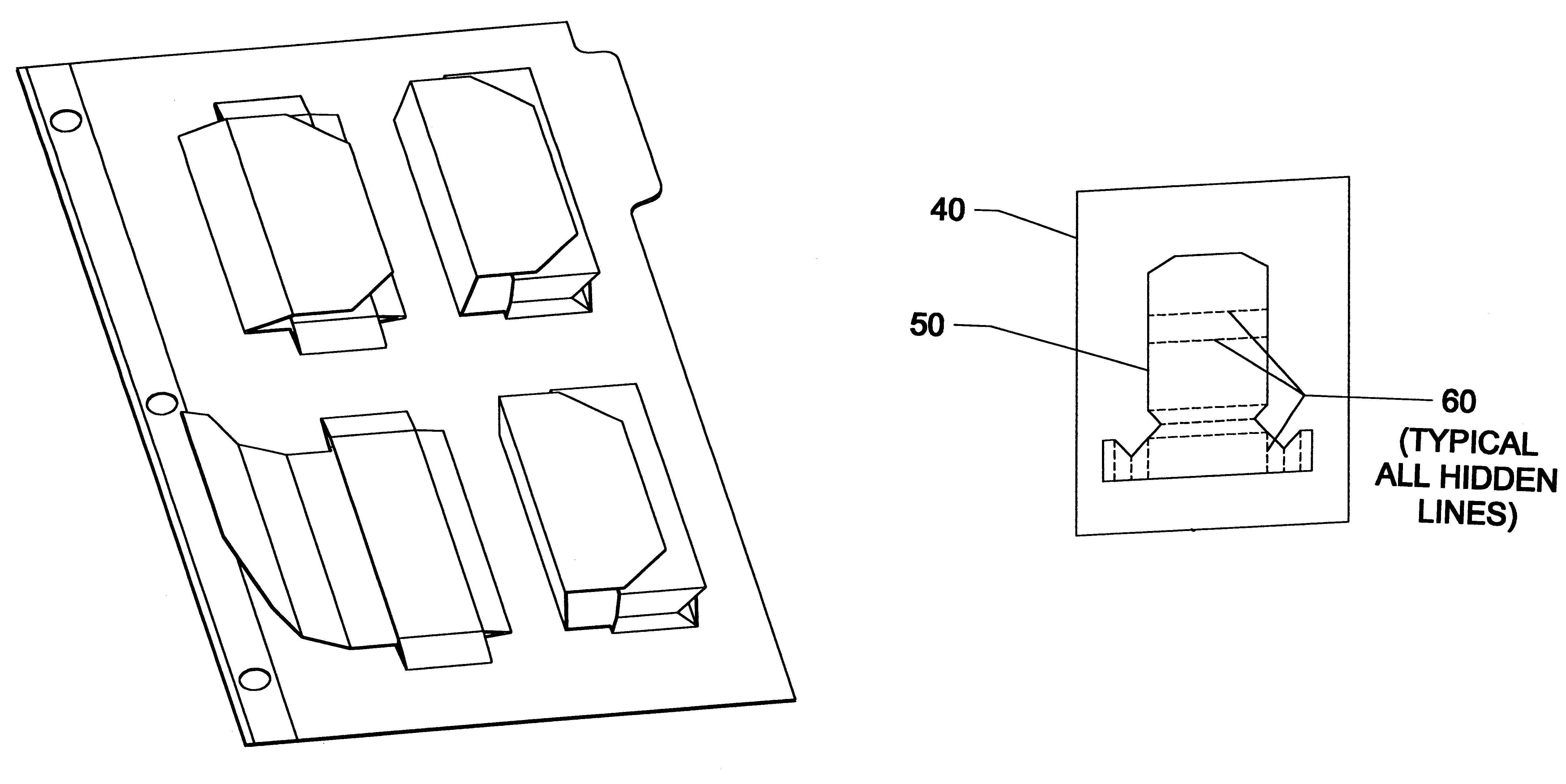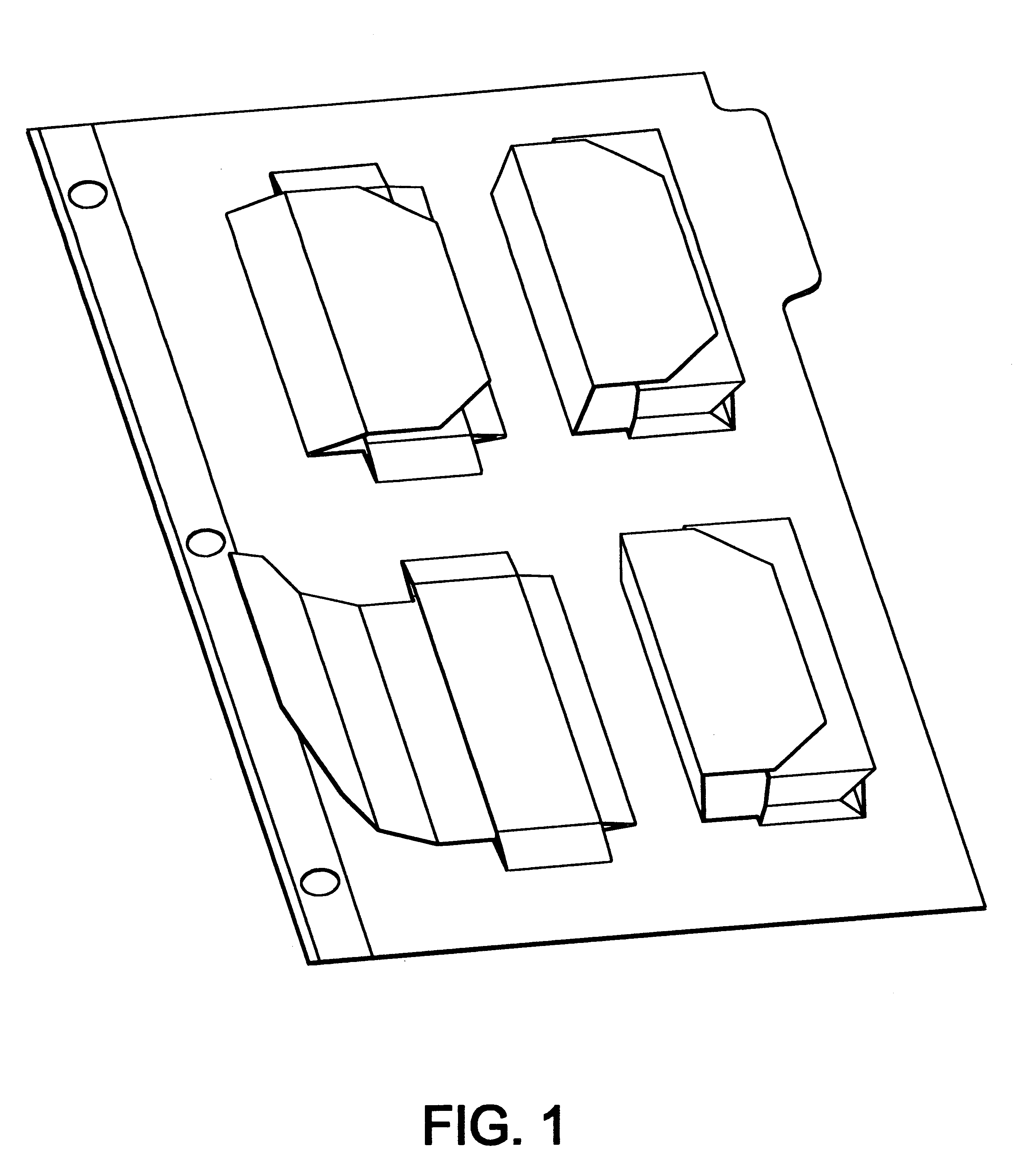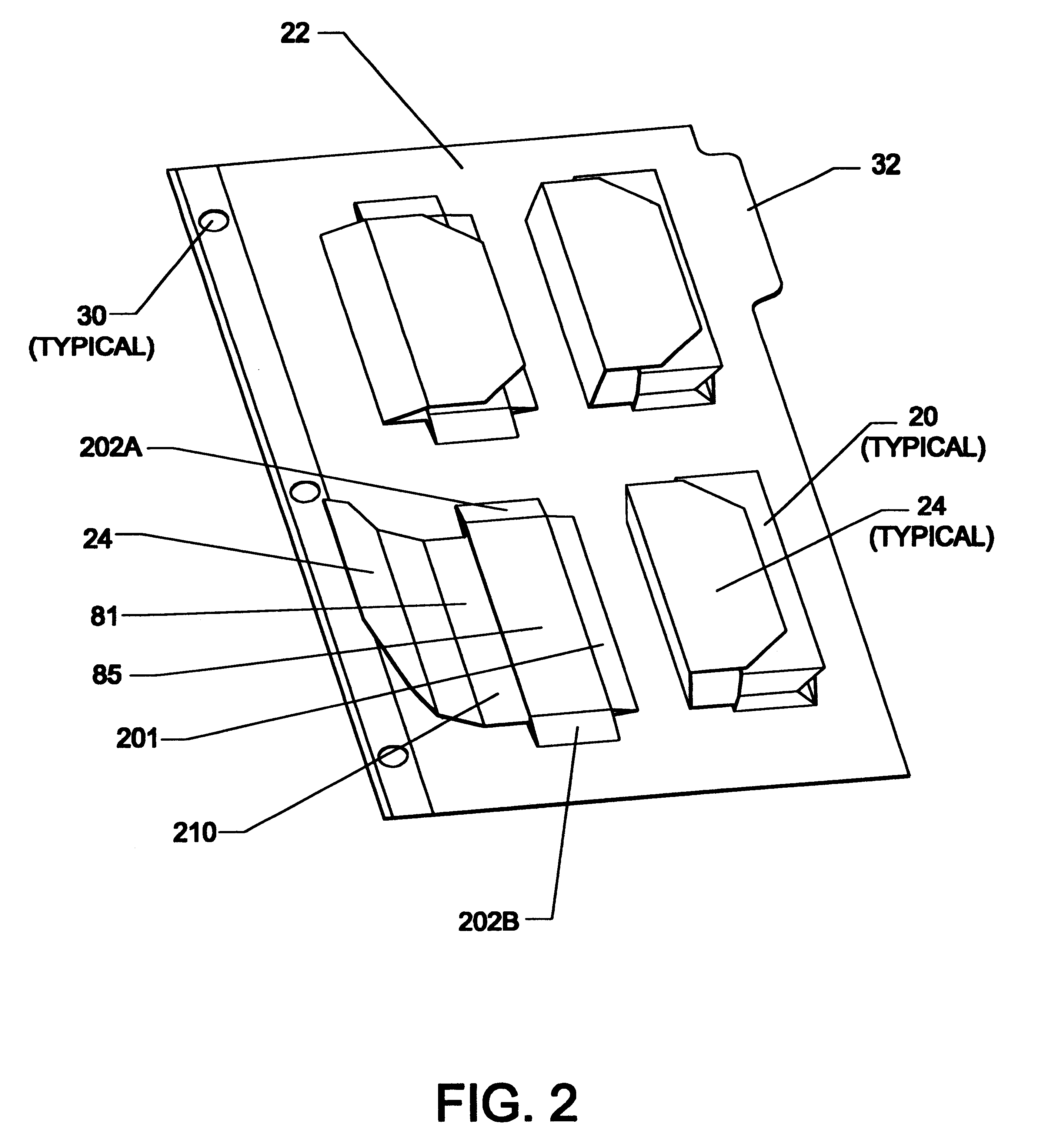Organizing and storage system for cards
a card and storage system technology, applied in the field of organization accessories, can solve the problems of difficulty in managing and organizing many flashcards, no known system that provides the ability to easily carry, and easily categorize and reorganize cards, etc., and achieves the effect of diverting attention, facilitating organization of learning materials, and maintaining organization integrity
- Summary
- Abstract
- Description
- Claims
- Application Information
AI Technical Summary
Problems solved by technology
Method used
Image
Examples
main embodiment
OPERATION--MAIN EMBODIMENT
To help illustrate use of main embodiment, consider persons using textbooks for foreign language, law, pre-med, or history classes. As they progress through their textbooks, each new chapter will introduce new vocabulary, definitions, terminology, or facts. In some foreign language courses, for example, there will be at least 100 new vocabulary words per week. Students often use flashcards as tools to learn terminology, and they often organize their cards into groups. The Organizer is a tool to help them categorize and transport their cards.
For example, first-time users will take an empty Organizer, shown in FIG. 6. They will prepare it for use by writing the subject name onto tab #32 ("Spanish Lesson 1"). Next they insert the Organizer into a three-ring binder using the provided three-hole punches #30. With four pouches available for use, users would designate pouch #101: "Unlearned Vocabulary," pouch #102: "Intermediate-Level Vocabulary," and pouch #103: ...
PUM
 Login to View More
Login to View More Abstract
Description
Claims
Application Information
 Login to View More
Login to View More - R&D
- Intellectual Property
- Life Sciences
- Materials
- Tech Scout
- Unparalleled Data Quality
- Higher Quality Content
- 60% Fewer Hallucinations
Browse by: Latest US Patents, China's latest patents, Technical Efficacy Thesaurus, Application Domain, Technology Topic, Popular Technical Reports.
© 2025 PatSnap. All rights reserved.Legal|Privacy policy|Modern Slavery Act Transparency Statement|Sitemap|About US| Contact US: help@patsnap.com



